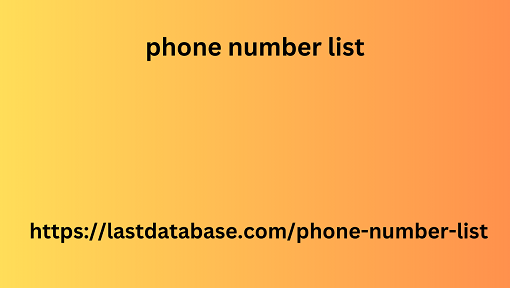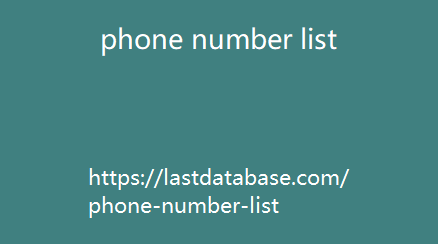Content marketing is a dynamic and fast-growing industry. In order to keep up with the competition, you will have to constantly put in a lot of effort. First of all, it is worth defining benchmarks for evaluating the effectiveness of your marketing strategy, with the help of which you will be able to find and eliminate its weak points.
No matter how much experience you have in the advertising industry, you will benefit from tracking benchmarks. This approach will allow you to optimize your strategy and achieve the desired results.
Some metrics (such as website traffic and brand awareness) are especially important because they provide a clear and precise direction for the company’s development. In this article, we will look at ten key content marketing benchmarks that can serve as your guide in the complex and confusing world of digital promotion.
Key points:
Selecting benchmarks and defining target indicators will help to form a clear idea of the effectiveness of the content;
Measuring total visits, unique visitors, and page views helps you evaluate the effectiveness of your content;
Increasing average time on page, pages per session, and social interactions will help you create content that resonates with your target audience;
Monitoring conversion rates, lead volume, and cost will help you determine how much money it takes to convert visitors into potential customers.
1. Website traffic
Traffic is the total number of visitors who visit your site. It is important to track your site’s traffic because it reflects how well your content attracts and retains your audience’s interest.
Key traffic metrics include:
Total Visits: The sum of all visits to your site.
Unique visitors: The number of new people who visited your site (repeat visits are not counted).
Page Views: The total number of pages viewed by all visitors.
Analyzing the above metrics will help you evaluate the effectiveness of your site. High traffic and page views indicate the popularity and appeal of the content, while tracking unique visitors allows you to determine the audience reach.
Use this data to improve your content strategy and increase user engagement.
2. Engagement Metrics
Engagement metrics europe cell phone number list measure how actively visitors interact with your website content, reflecting its effectiveness and appeal. These metrics are important because they provide insight into whether your content is valuable and engaging to your target audience.
When assessing engagement, it is worth paying attention to the following indicators:
Average Time on Page: The amount of time visitors spend on a page reflects user interest.
Pages per session: The number of pages a visitor views in a single session reflects the quality of navigation and content.
Number of likes and shares: How often your content is shared and liked on social media reflects the reach and popularity of the site.
Comments and Interactions: Reflects how actively visitors interact with the site, such as leaving comments and participating in discussions.
To increase engagement, create high-quality, relevant content that resonates with your audience. Use compelling headlines, visuals, and interactive elements to grab visitors’ attention and encourage deeper interaction.
3. Lead generation
Lead generation through content marketing is essential to converting interested visitors into potential customers. Effective lead generation helps grow your business and increase revenue.
The following metrics are worth tracking:
Conversion rate: The percentage of visitors who take a desired action (such as filling out a form or subscribing to a newsletter).
Number of Leads: The total number of potential customers generated through your content.
Cost per lead: The cost incurred to acquire each lead, this metric helps you evaluate the profitability of your marketing efforts.
To increase lead generation 14 modu aseguru-lerroak lortzeko efficiency, you need to create valuable content that addresses your audience’s needs and solves their problems. Use clear calls to action (CTAs), optimize landing pages, and offer incentives like ebooks or free samples to motivate visitors to share their contact information.
4. SEO Effectiveness
When shopping online, more than 50% of users use Google to search for new products or brands. That’s why SEO (search engine optimization) is one of the key components of content marketing success. It improves the visibility of your content in search engines, bringing organic traffic to your site.
To evaluate SEO effectiveness, track metrics such as:
Organic traffic: The number of visitors coming from search engines gives you an idea of the reach of your content.
Keyword ranking: How well your content ranks for specific search queries reflects its relevance and effectiveness.
Backlinks: The number and quality of external links that point to your content, increasing its authority.
Using relevant keywords, publishing useful content, and creating a user-friendly website interface will improve your site’s ranking in search znb directory engines. Regularly update your content, build your link profile, and use metadata correctly to improve your SEO.
5. Email Marketing
Email marketing plays a vital role in content strategy, providing a direct connection with the audience and increasing their engagement. However, 72% of marketers do not track the effectiveness of this promotion channel.
Start monitoring the following metrics:
Open Rate: The percentage of recipients who open your email, indicating how interesting it is.
Click-through rate (CTR): The percentage of recipients who click on links in your email, which reflects the effectiveness of the content.
Unsubscribe rate: The percentage of recipients who opt out of your emails can help you gauge the relevance of your content.
Your email campaigns should use catchy subject lines, valuable and relevant content, and clear calls to action (CTAs).
Personalize your emails to resonate with your audience and use visually appealing designs to keep their attention. Regularly analyze the above metrics to optimize your strategy and improve the results of your email campaigns.
Track the following metrics:
Revenue Generated: The total revenue directly related to your content marketing efforts.
Customer Acquisition Cost (CAC): The cost incurred to acquire a new customer through content marketing.
Customer Lifetime Value (CLV): The total revenue a business can expect from a single customer over the entire duration of its relationship with them.
Analyze data to target the right audience and personalize content for best results. Optimize your marketing funnel to effectively convert leads into buyers. Continuously monitor and adjust your strategies based on performance metrics.
Make sure you track the following metrics:
Published Content: The amount of content you create and publish.
Content Calendar Adherence: How well does your team stick to your planned publishing schedule?
Content Quality Assessment: Assess content based on factors such as readability, depth, and engagement.
Posting consistent, quality content is essential to building trust and authority with your audience. A well-designed publishing calendar will ensure that you are consistently producing quality content that will attract and retain readers, delivering the best results in line with your content strategy.
8. Audience growth
Tracking your audience growth will help you determine the reach and effectiveness of your content.
Monitor the following metrics:
Social Media Followers: The number of people following your brand across various social media platforms.
Email Subscribers: The number of people who have signed up for your email newsletter.
Community Engagement: The level of interaction and participation of users in your online communities.
Creating shareable content, engaging with your followers on social media, and rewarding email signups will help you achieve your goals. You should continually build a stronger community: encourage discussions, respond to comments, and host interactive events.
Track the following metrics:
Brand Mentions: The number of times your brand is mentioned online, giving you an idea of its visibility.
Sentiment analysis: an assessment of the emotional coloring of the text when mentioning a brand – will allow you to determine how exactly the public feels about you.
Regularly publishing relevant content that resonates with your audience will help increase brand awareness. You should also promote it through social media, guest posting, and influencers to expand your reach.
Actively advertising your brand and maintaining a positive presence also helps to increase brand awareness.






